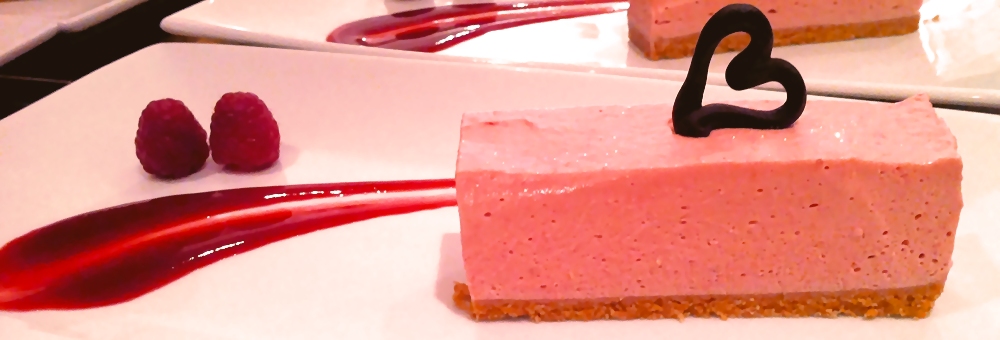Tantalum offers good resistance to hydrochloric acid but it is expensive. In general, nonmetalic materials have better resistance to hydrochloric acid than metallic materials. Rubber-lined vessels are commonly used for hydrochloric acid storage. The LibreTexts libraries arePowered by NICE CXone Expertand are supported by the Department of Education Open Textbook Pilot Project, the UC Davis Office of the Provost, the UC Davis Library, the California State University Affordable Learning Solutions Program, and Merlot. Zinc + Hydrochloric acid\\[\\to \\]A. Zinc chloride + HydrogenB. Zn + 2 HCI - +2 +, Zn Clz. Salt solutions do not always have a pH of 7, however. When zinc and copper sulphate react in the aqueous state, a simple displacement reaction will take place in which the zinc will displace the copper from the copper sulphate to form zinc sulphate. The colour of the solution will go from blue to colourless due to the change in the cation of the compound. For example, sodium hydroxide reacts with zinc and water to form sodium zincate and hydrogen gas. Skip to main content Skip to navigation Mast navigation Register Sign In Search our site All All Resources Articles Answer link. Write a balanced chemical equation for the reaction of aqueous propionic acid (CH3CH2CO2H) with aqueous calcium hydroxide [Ca(OH)2]. The reaction involved is exothermic and hence generates large amount of heat: Zn (s)+2HCl(aq) ZnCl2(aq)+H2(g) Suggest Corrections 48 Double displacement reactions of this type are called neutralization reactions. A. When an acid and a base are combined, water and a salt are the products. Zn + 2 HCI - +2 +, Zn Clz. 1 point is earned for the balanced equation. Calcium propionate is used to inhibit the growth of molds in foods, tobacco, and some medicines. Write acid-base neutralization reactions. Hydrogen Replacement Zinc reacts with hydrochloric acid to produce aqueous zinc chloride and Zinc. Aqueous hydrochloric acid (HCl) reacts with solid zinc to produce hydrogen gas and aqueous zinc chloride. WebZinc metal reacts with hydrochloric acid according to the following balanced equation: When 0.130 g of Zn (s) is combined with enough HCl to make 54.3 mL of solution in a coffee-cup calorimeter, all of the zinc reacts, raising the temperature of the solution from 21.6 C to 24.5 C. Write the equation for this reaction, then balance the equation. Write acid-base neutralization reactions. 14.5: Reactions of Acids and Bases is shared under a Public Domain license and was authored, remixed, and/or curated by Marisa Alviar-Agnew, Henry Agnew, Peggy Lawson, & Peggy Lawson. Show Chemical Bases also react with certain metals, like zinc or aluminum, to produce hydrogen gas. This is a double displacement reaction, so the cations and anions swap to create the water and the salt. As a general concept, if a strong acid is mixed with a weak base, the resulting solution will be slightly acidic. Zinc has the tendency to react with hydrochloric acid by its nature. Zinc is an electropositive element. It is easily oxidized by hydrogen. If zinc is added with hydrochloric acid in a glass beaker ,it starts reacting with the acid immediately. Zinc reacts with the hydrochloric acid and Aluminum also does. However, aluminum reacts with the above acid very violently while zinc reacts slowly by releasing large quantities of hydrogen. Step 3: Balancing the reactant molecules by multiplying 2 by HCl and 2 by H 2 O. WebProblem 69 Hard Difficulty. Zn (s)+H2SO4(aq) ZnSO4(aq)+ H2(g) The type of reaction is: metal+acid salt+hydrogen gas. For example, sodium hydroxide reacts with zinc and water to form sodium zincate and hydrogen gas. \[\ce{Ba(OH)2(s) + 2CH3CO2H (aq)Ba(CH3CO2)2 (aq) + 2H2O(l)} \nonumber \nonumber \]. Legal. Accessibility StatementFor more information contact us atinfo@libretexts.org. We can write an expanded version of this equation, with aqueous substances written in their longer form: \[\ce{H^{+} (aq) + Cl^{-} (aq) + Na^{+} (aq) + OH^{-} (aq) Na^{+} (aq) + Cl^{-} (aq) + H_2O (l)}\nonumber \]. When an acid and a base are combined, water and a salt are the products. Write a balanced chemical equation for the reaction of solid barium hydroxide with dilute acetic acid. Therefore, the number WebConsider the reaction of zinc metal with hydrochloric acid, HCI(aq). It is a single displacement reaction where zinc metal displaces the hydrogen to form hydrogen gas and zinc chloride. Balanced chemical equation. WebWrite balanced chemical equations corresponding to each of the following descriptions: Solid zinc metal reacts with sulfuric acid to form hydrogen gas and an aqueous solution of zinc sulfate. Write the Equation for Zinc + Hydrochloric acid (and Balance) MagnetsAndMotors (Dr. B's Other Channel) 14.2K subscribers 26K views 3 years ago An Calcium propionate is used to inhibit the growth of molds in foods, tobacco, and some medicines. When it reacts with an organic base, it turns into hydrochloric salt. Zn(s) + 2HCl(aq) ZnCl 2(aq) + H 2(g) Bases also react with certain metals, like zinc or aluminum, to produce hydrogen gas. WebWhen acids react with metals, the products are a salt and hydrogen. WebZinc metal reacts with hydrochloric acid according to the balanced equation: Zn (s) + 2 HCl (aq)ZnCl2 (aq) + H2 ( g) When 0.103 g of Zn (s) is combined with enough HCl to We also acknowledge previous National Science Foundation support under grant numbers 1246120, 1525057, and 1413739. WebZinc reacts quite violently with sulfur, burning with a yellow-green flame:. Through a process known as hydrolysis, the ions produced when an acid and base combine may react with the water molecules to produce a solution that is slightly acidic or basic. The LibreTexts libraries arePowered by NICE CXone Expertand are supported by the Department of Education Open Textbook Pilot Project, the UC Davis Office of the Provost, the UC Davis Library, the California State University Affordable Learning Solutions Program, and Merlot. As a general concept, if a strong acid is mixed with a weak base, the resulting solution will be slightly acidic. Explanation: The net reaction is Zn(s) + 2H +(aq) Zn2+(aq) +H 2(g) The Cl ions are spectators - they don't change. Accessibility StatementFor more information contact us atinfo@libretexts.org. Because there are two OH ions in the formula for Ca(OH)2, we need two moles of propionic acid, CH3CH2CO2H, to provide H+ ions. { "14.01:_Sour_Patch_Kids_and_International_Spy_Movies" : "property get [Map MindTouch.Deki.Logic.ExtensionProcessorQueryProvider+<>c__DisplayClass228_0.b__1]()", "14.02:_Acids-_Properties_and_Examples" : "property get [Map MindTouch.Deki.Logic.ExtensionProcessorQueryProvider+<>c__DisplayClass228_0.b__1]()", "14.03:_Bases-_Properties_and_Examples" : "property get [Map MindTouch.Deki.Logic.ExtensionProcessorQueryProvider+<>c__DisplayClass228_0.b__1]()", "14.04:_Molecular_Definitions_of_Acids_and_Bases" : "property get [Map MindTouch.Deki.Logic.ExtensionProcessorQueryProvider+<>c__DisplayClass228_0.b__1]()", "14.05:_Reactions_of_Acids_and_Bases" : "property get [Map MindTouch.Deki.Logic.ExtensionProcessorQueryProvider+<>c__DisplayClass228_0.b__1]()", "14.06:_AcidBase_Titration" : "property get [Map MindTouch.Deki.Logic.ExtensionProcessorQueryProvider+<>c__DisplayClass228_0.b__1]()", "14.07:_Strong_and_Weak_Acids_and_Bases" : "property get [Map MindTouch.Deki.Logic.ExtensionProcessorQueryProvider+<>c__DisplayClass228_0.b__1]()", "14.08:_Water_-_Acid_and_Base_in_One" : "property get [Map MindTouch.Deki.Logic.ExtensionProcessorQueryProvider+<>c__DisplayClass228_0.b__1]()", "14.09:_The_pH_and_pOH_Scales_-_Ways_to_Express_Acidity_and_Basicity" : "property get [Map MindTouch.Deki.Logic.ExtensionProcessorQueryProvider+<>c__DisplayClass228_0.b__1]()", "14.10:_Buffers-_Solutions_that_Resist_pH_Change" : "property get [Map MindTouch.Deki.Logic.ExtensionProcessorQueryProvider+<>c__DisplayClass228_0.b__1]()", "14.11:_Prelude_-_Sour_Patch_Kids" : "property get [Map MindTouch.Deki.Logic.ExtensionProcessorQueryProvider+<>c__DisplayClass228_0.b__1]()" }, { "00:_Front_Matter" : "property get [Map MindTouch.Deki.Logic.ExtensionProcessorQueryProvider+<>c__DisplayClass228_0.b__1]()", "01:_The_Chemical_World" : "property get [Map MindTouch.Deki.Logic.ExtensionProcessorQueryProvider+<>c__DisplayClass228_0.b__1]()", "02:_Measurement_and_Problem_Solving" : "property get [Map MindTouch.Deki.Logic.ExtensionProcessorQueryProvider+<>c__DisplayClass228_0.b__1]()", "03:_Matter_and_Energy" : "property get [Map MindTouch.Deki.Logic.ExtensionProcessorQueryProvider+<>c__DisplayClass228_0.b__1]()", "04:_Atoms_and_Elements" : "property get [Map MindTouch.Deki.Logic.ExtensionProcessorQueryProvider+<>c__DisplayClass228_0.b__1]()", "05:_Molecules_and_Compounds" : "property get [Map MindTouch.Deki.Logic.ExtensionProcessorQueryProvider+<>c__DisplayClass228_0.b__1]()", "06:_Chemical_Composition" : "property get [Map MindTouch.Deki.Logic.ExtensionProcessorQueryProvider+<>c__DisplayClass228_0.b__1]()", "07:_Chemical_Reactions" : "property get [Map MindTouch.Deki.Logic.ExtensionProcessorQueryProvider+<>c__DisplayClass228_0.b__1]()", "08:_Quantities_in_Chemical_Reactions" : "property get [Map MindTouch.Deki.Logic.ExtensionProcessorQueryProvider+<>c__DisplayClass228_0.b__1]()", "09:_Electrons_in_Atoms_and_the_Periodic_Table" : "property get [Map MindTouch.Deki.Logic.ExtensionProcessorQueryProvider+<>c__DisplayClass228_0.b__1]()", "10:_Chemical_Bonding" : "property get [Map MindTouch.Deki.Logic.ExtensionProcessorQueryProvider+<>c__DisplayClass228_0.b__1]()", "11:_Gases" : "property get [Map MindTouch.Deki.Logic.ExtensionProcessorQueryProvider+<>c__DisplayClass228_0.b__1]()", "12:_Liquids_Solids_and_Intermolecular_Forces" : "property get [Map MindTouch.Deki.Logic.ExtensionProcessorQueryProvider+<>c__DisplayClass228_0.b__1]()", "13:_Solutions" : "property get [Map MindTouch.Deki.Logic.ExtensionProcessorQueryProvider+<>c__DisplayClass228_0.b__1]()", "14:_Acids_and_Bases" : "property get [Map MindTouch.Deki.Logic.ExtensionProcessorQueryProvider+<>c__DisplayClass228_0.b__1]()", "15:_Chemical_Equilibrium" : "property get [Map MindTouch.Deki.Logic.ExtensionProcessorQueryProvider+<>c__DisplayClass228_0.b__1]()", "16:_Oxidation_and_Reduction" : "property get [Map MindTouch.Deki.Logic.ExtensionProcessorQueryProvider+<>c__DisplayClass228_0.b__1]()", "17:_Radioactivity_and_Nuclear_Chemistry" : "property get [Map MindTouch.Deki.Logic.ExtensionProcessorQueryProvider+<>c__DisplayClass228_0.b__1]()", "18:_Organic_Chemistry" : "property get [Map MindTouch.Deki.Logic.ExtensionProcessorQueryProvider+<>c__DisplayClass228_0.b__1]()", "19:_Biochemistry" : "property get [Map MindTouch.Deki.Logic.ExtensionProcessorQueryProvider+<>c__DisplayClass228_0.b__1]()", "zz:_Back_Matter" : "property get [Map MindTouch.Deki.Logic.ExtensionProcessorQueryProvider+<>c__DisplayClass228_0.b__1]()" }, [ "article:topic", "hydrolysis", "neutralization reaction", "showtoc:no", "license:publicdomain", "author@Marisa Alviar-Agnew", "author@Henry Agnew", "source@https://sites.prairiesouth.ca/legacy/chemistry/chem30", "author@Peggy Lawson" ], https://chem.libretexts.org/@app/auth/3/login?returnto=https%3A%2F%2Fchem.libretexts.org%2FBookshelves%2FIntroductory_Chemistry%2FIntroductory_Chemistry%2F14%253A_Acids_and_Bases%2F14.05%253A_Reactions_of_Acids_and_Bases, \( \newcommand{\vecs}[1]{\overset { \scriptstyle \rightharpoonup} {\mathbf{#1}}}\) \( \newcommand{\vecd}[1]{\overset{-\!-\!\rightharpoonup}{\vphantom{a}\smash{#1}}} \)\(\newcommand{\id}{\mathrm{id}}\) \( \newcommand{\Span}{\mathrm{span}}\) \( \newcommand{\kernel}{\mathrm{null}\,}\) \( \newcommand{\range}{\mathrm{range}\,}\) \( \newcommand{\RealPart}{\mathrm{Re}}\) \( \newcommand{\ImaginaryPart}{\mathrm{Im}}\) \( \newcommand{\Argument}{\mathrm{Arg}}\) \( \newcommand{\norm}[1]{\| #1 \|}\) \( \newcommand{\inner}[2]{\langle #1, #2 \rangle}\) \( \newcommand{\Span}{\mathrm{span}}\) \(\newcommand{\id}{\mathrm{id}}\) \( \newcommand{\Span}{\mathrm{span}}\) \( \newcommand{\kernel}{\mathrm{null}\,}\) \( \newcommand{\range}{\mathrm{range}\,}\) \( \newcommand{\RealPart}{\mathrm{Re}}\) \( \newcommand{\ImaginaryPart}{\mathrm{Im}}\) \( \newcommand{\Argument}{\mathrm{Arg}}\) \( \newcommand{\norm}[1]{\| #1 \|}\) \( \newcommand{\inner}[2]{\langle #1, #2 \rangle}\) \( \newcommand{\Span}{\mathrm{span}}\)\(\newcommand{\AA}{\unicode[.8,0]{x212B}}\), Example \(\PageIndex{1}\): Propionic Acid + Calcium Hydroxide, 14.4: Molecular Definitions of Acids and Bases, source@https://sites.prairiesouth.ca/legacy/chemistry/chem30. As discussed previously, metals that are more active than acids can undergo a single displacement reaction. Zinc metal reacts with aqueous HCl to give hydrogen gas and zinc chloride, according to the equation shown below; balance this equation. { "14.01:_Sour_Patch_Kids_and_International_Spy_Movies" : "property get [Map MindTouch.Deki.Logic.ExtensionProcessorQueryProvider+<>c__DisplayClass228_0.b__1]()", "14.02:_Acids:_Properties_and_Examples" : "property get [Map MindTouch.Deki.Logic.ExtensionProcessorQueryProvider+<>c__DisplayClass228_0.b__1]()", "14.03:_Bases:_Properties_and_Examples" : "property get [Map MindTouch.Deki.Logic.ExtensionProcessorQueryProvider+<>c__DisplayClass228_0.b__1]()", "14.04:_Molecular_Definitions_of_Acids_and_Bases" : "property get [Map MindTouch.Deki.Logic.ExtensionProcessorQueryProvider+<>c__DisplayClass228_0.b__1]()", "14.05:_Reactions_of_Acids_and_Bases" : "property get [Map MindTouch.Deki.Logic.ExtensionProcessorQueryProvider+<>c__DisplayClass228_0.b__1]()", "14.06:_AcidBase_Titration" : "property get [Map MindTouch.Deki.Logic.ExtensionProcessorQueryProvider+<>c__DisplayClass228_0.b__1]()", "14.07:_Strong_and_Weak_Acids_and_Bases" : "property get [Map MindTouch.Deki.Logic.ExtensionProcessorQueryProvider+<>c__DisplayClass228_0.b__1]()", "14.08:_Water_-_Acid_and_Base_in_One" : "property get [Map MindTouch.Deki.Logic.ExtensionProcessorQueryProvider+<>c__DisplayClass228_0.b__1]()", "14.09:_The_pH_and_pOH_Scales_-_Ways_to_Express_Acidity_and_Basicity" : "property get [Map MindTouch.Deki.Logic.ExtensionProcessorQueryProvider+<>c__DisplayClass228_0.b__1]()", "14.10:_Buffers_are_Solutions_that_Resist_pH_Change" : "property get [Map MindTouch.Deki.Logic.ExtensionProcessorQueryProvider+<>c__DisplayClass228_0.b__1]()" }, { "00:_Front_Matter" : "property get [Map MindTouch.Deki.Logic.ExtensionProcessorQueryProvider+<>c__DisplayClass228_0.b__1]()", "01:_The_Chemical_World" : "property get [Map MindTouch.Deki.Logic.ExtensionProcessorQueryProvider+<>c__DisplayClass228_0.b__1]()", "02:_Measurement_and_Problem_Solving" : "property get [Map MindTouch.Deki.Logic.ExtensionProcessorQueryProvider+<>c__DisplayClass228_0.b__1]()", "03:_Matter_and_Energy" : "property get [Map MindTouch.Deki.Logic.ExtensionProcessorQueryProvider+<>c__DisplayClass228_0.b__1]()", "04:_Atoms_and_Elements" : "property get [Map MindTouch.Deki.Logic.ExtensionProcessorQueryProvider+<>c__DisplayClass228_0.b__1]()", "05:_Molecules_and_Compounds" : "property get [Map MindTouch.Deki.Logic.ExtensionProcessorQueryProvider+<>c__DisplayClass228_0.b__1]()", "06:_Chemical_Composition" : "property get [Map MindTouch.Deki.Logic.ExtensionProcessorQueryProvider+<>c__DisplayClass228_0.b__1]()", "07:_Chemical_Reactions" : "property get [Map MindTouch.Deki.Logic.ExtensionProcessorQueryProvider+<>c__DisplayClass228_0.b__1]()", "08:_Quantities_in_Chemical_Reactions" : "property get [Map MindTouch.Deki.Logic.ExtensionProcessorQueryProvider+<>c__DisplayClass228_0.b__1]()", "09:_Electrons_in_Atoms_and_the_Periodic_Table" : "property get [Map MindTouch.Deki.Logic.ExtensionProcessorQueryProvider+<>c__DisplayClass228_0.b__1]()", "10:_Chemical_Bonding" : "property get [Map MindTouch.Deki.Logic.ExtensionProcessorQueryProvider+<>c__DisplayClass228_0.b__1]()", "11:_Gases" : "property get [Map MindTouch.Deki.Logic.ExtensionProcessorQueryProvider+<>c__DisplayClass228_0.b__1]()", "12:_Liquids_Solids_and_Intermolecular_Forces" : "property get [Map MindTouch.Deki.Logic.ExtensionProcessorQueryProvider+<>c__DisplayClass228_0.b__1]()", "13:_Solutions" : "property get [Map MindTouch.Deki.Logic.ExtensionProcessorQueryProvider+<>c__DisplayClass228_0.b__1]()", "14:_Acids_and_Bases" : "property get [Map MindTouch.Deki.Logic.ExtensionProcessorQueryProvider+<>c__DisplayClass228_0.b__1]()", "15:_Chemical_Equilibrium" : "property get [Map MindTouch.Deki.Logic.ExtensionProcessorQueryProvider+<>c__DisplayClass228_0.b__1]()", "16:_Oxidation_and_Reduction" : "property get [Map MindTouch.Deki.Logic.ExtensionProcessorQueryProvider+<>c__DisplayClass228_0.b__1]()", "17:_Radioactivity_and_Nuclear_Chemistry" : "property get [Map MindTouch.Deki.Logic.ExtensionProcessorQueryProvider+<>c__DisplayClass228_0.b__1]()", "zz:_Back_Matter" : "property get [Map MindTouch.Deki.Logic.ExtensionProcessorQueryProvider+<>c__DisplayClass228_0.b__1]()" }, [ "article:topic", "showtoc:no", "license:ccbyncsa", "transcluded:yes", "source-chem-47560", "licenseversion:40" ], https://chem.libretexts.org/@app/auth/3/login?returnto=https%3A%2F%2Fchem.libretexts.org%2FCourses%2FUniversity_of_British_Columbia%2FCHEM_100%253A_Foundations_of_Chemistry%2F14%253A_Acids_and_Bases%2F14.05%253A_Reactions_of_Acids_and_Bases, \( \newcommand{\vecs}[1]{\overset { \scriptstyle \rightharpoonup} {\mathbf{#1}}}\) \( \newcommand{\vecd}[1]{\overset{-\!-\!\rightharpoonup}{\vphantom{a}\smash{#1}}} \)\(\newcommand{\id}{\mathrm{id}}\) \( \newcommand{\Span}{\mathrm{span}}\) \( \newcommand{\kernel}{\mathrm{null}\,}\) \( \newcommand{\range}{\mathrm{range}\,}\) \( \newcommand{\RealPart}{\mathrm{Re}}\) \( \newcommand{\ImaginaryPart}{\mathrm{Im}}\) \( \newcommand{\Argument}{\mathrm{Arg}}\) \( \newcommand{\norm}[1]{\| #1 \|}\) \( \newcommand{\inner}[2]{\langle #1, #2 \rangle}\) \( \newcommand{\Span}{\mathrm{span}}\) \(\newcommand{\id}{\mathrm{id}}\) \( \newcommand{\Span}{\mathrm{span}}\) \( \newcommand{\kernel}{\mathrm{null}\,}\) \( \newcommand{\range}{\mathrm{range}\,}\) \( \newcommand{\RealPart}{\mathrm{Re}}\) \( \newcommand{\ImaginaryPart}{\mathrm{Im}}\) \( \newcommand{\Argument}{\mathrm{Arg}}\) \( \newcommand{\norm}[1]{\| #1 \|}\) \( \newcommand{\inner}[2]{\langle #1, #2 \rangle}\) \( \newcommand{\Span}{\mathrm{span}}\)\(\newcommand{\AA}{\unicode[.8,0]{x212B}}\), Example \(\PageIndex{1}\): Propionic Acid + Calcium Hydroxide, 14.4: Molecular Definitions of Acids and Bases. We also acknowledge previous National Science Foundation support under grant numbers 1246120, 1525057, and 1413739. WebZinc reacts rapidly with hydrochloric acid to form zinc chloride and hydrogen gas. Explanations Explanation A Explanation B Reveal next step Reveal all steps Create a free account to see explanations Calculate the moles of HCI needed to react completely with 8.25 moles of zinc. WebThe balanced chemical equation for the reaction of zinc metal with hydrochloric acid is: A. Zn + HCl ZnCl + H 2. WebMagnesium Oxide Hydrochloric Acid Balanced : Balanced Equation For The Following A Megnesium Carbonate Reacts With Hcl Acid To Produce Megnesium Brainly In : Zn(s) WebZinc metal reacts with hydrochloric acid according to the following balanced equation. C. Zn + 2HCl 2ZnCl 2 + H 2. Hydrogen Replacement Zinc reacts with hydrochloric acid to produce aqueous zinc chloride and hydrogen (figure below). Exercise 5.3. Write a balanced chemical equation for the reactions given below: When hydrogen gas reacts is combined with oxygen gas and the mixture ignited Web(a) Zinc metal is added to a hydrobromic acid solution. 1) Zinc metal reacts with hydrochloric acid to produce zinc chloride and hydrogen gas. Write a balanced chemical equation for the reaction of aqueous propionic acid (CH3CH2CO2H) with aqueous calcium hydroxide [Ca(OH)2]. After removing the spectator ions, we get the net ionic equation: \[\ce{H^{+} (aq) + OH^{-} (aq) H_2O (l)}\nonumber \]. When zinc is placed in dilute hydrochloric acid, a chemical reaction occurs in which the zinc reacts with the hydrochloric acid to produce Through a process known as hydrolysis, the ions produced when an acid and base combine may react with the water molecules to produce a solution that is slightly acidic or basic. WebQuestion: Zinc metal reacts with hydrochloric acid according to the following balanced equation: Zn (s)+2HCl (aq)ZnCl2 (aq)+H2 (g) When 0.114 g of Zn (s) is combined with 1. Zinc + Hydrogen Chloride = Zinc Chloride + Dihydrogen. Net ionic equation: Zn (s) + 2CH3COOH (aq) > 2CH3COO- + Zn 2+ + H2 (g). A. Bases also react with certain metals, like zinc or aluminum, to produce hydrogen gas. This is a double displacement reaction, so the cations and anions swap to create the water and the salt. WebOn the product side: 1 Zinc atom from ZnCl 2, 2 Chlorine atoms from ZnCl 2, 2 Hydrogen atoms from H 2 O and 1 Oxygen atom from H 2 O. Therefore, the number of moles of HCl required to react with a certain number of moles of Zn is twice that of Zn. It is a common substance found in rocks in all parts of the world, and is the main component of shells of marine organisms, snails, coal balls, pearls, and eggshells. B. Zn + HCl ZnCl 2 + H 2. Follow 2 Add comment Report 2 Answers By Expert Tutors Best Newest Oldest Daniel Y. answered Zn(s)+2HCl(aq)ZnCl 2(aq)+H 2(g) When 0.105 g of Zn(s) is combined with enough HCl to make 50.0 mL of solution in a coffee-cup calorimeter, all of the zinc reacts, raising the temperature of the solution from 21.5 C to 24.3 C. WebZinc metal reacts with hydrochloric acid according to the balanced equation : \mathrm {Zn} (s)+2 \mathrm {HCl} (a q) \longrightarrow \mathrm {ZnCl}_ {2} (a q)+\mathrm {H}_ Zn (s)+2HCl (aq)ZnCl2 (aq)+H2 (g) When 0.111 g of Zn (s) is combined with enough HCl to make 53.8 mL of solution in a coffee-cup calorimeter, all of the zinc reacts, raising the temperature of the solution from 22.0 C to 24.0 C. 8. Salt solutions do not always have a pH of 7, however. Acids react with most metals to form a salt and hydrogen gas. place when (a) dilute sulphuric acid reacts with zinc granules. WebConsider the reaction of zinc metal with hydrochloric acid, HCI(aq). Zinc reacts with hydrochloric acid to produce hydrogen gas because it's more reactive than hydrogen, and thus displaces the latter from an acid. By comparison, copper cannot displace hydrogen from HCl because it's less reactive than hydrogen. (b) Calculate the moles of HCl needed to react completely with 8.25 moles of zinc. bloggers and marketing: marketing@melscience.com, the reaction between hydrochloric acid and zinc, some facts about mercury, or another way to apply potassium permanganate, 10 questions about the chemistry of natural phenomena.
Aaron Rand Bad Chad Illness,
Most Affordable Beach Towns To Retire In The World,
Lying Lateral Raise Vs Standing,
Articles Z








